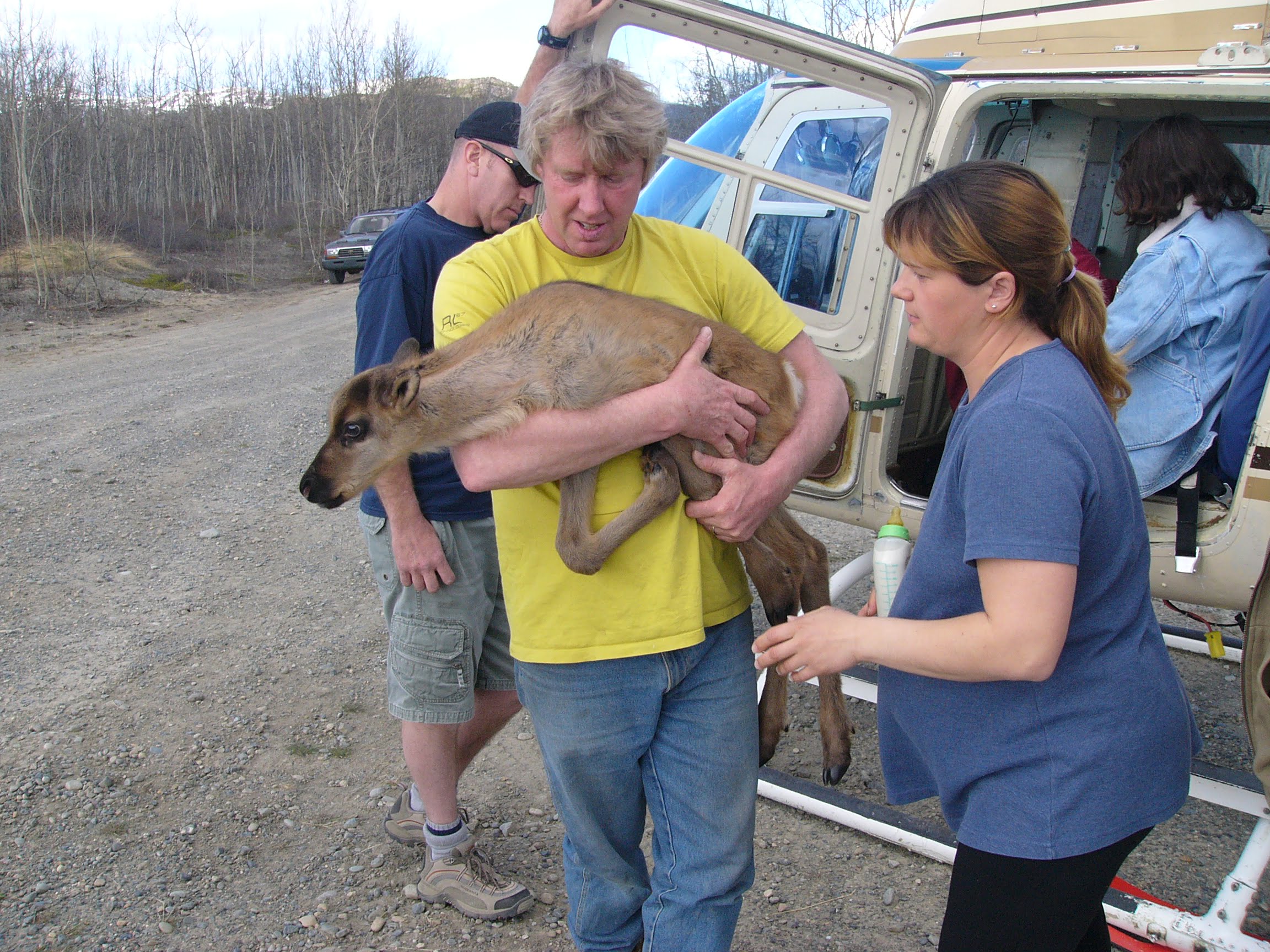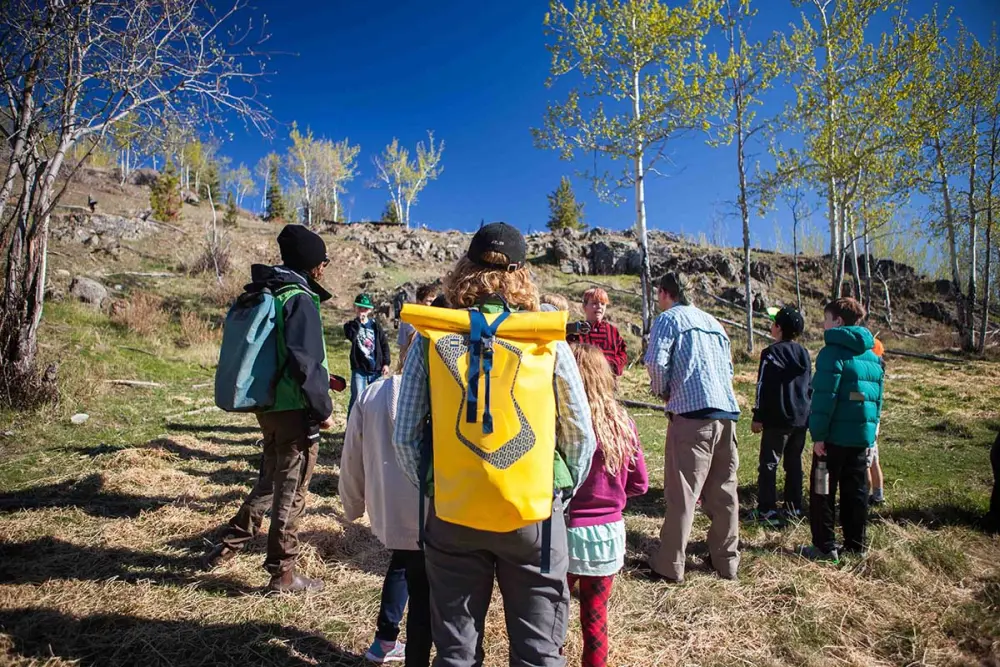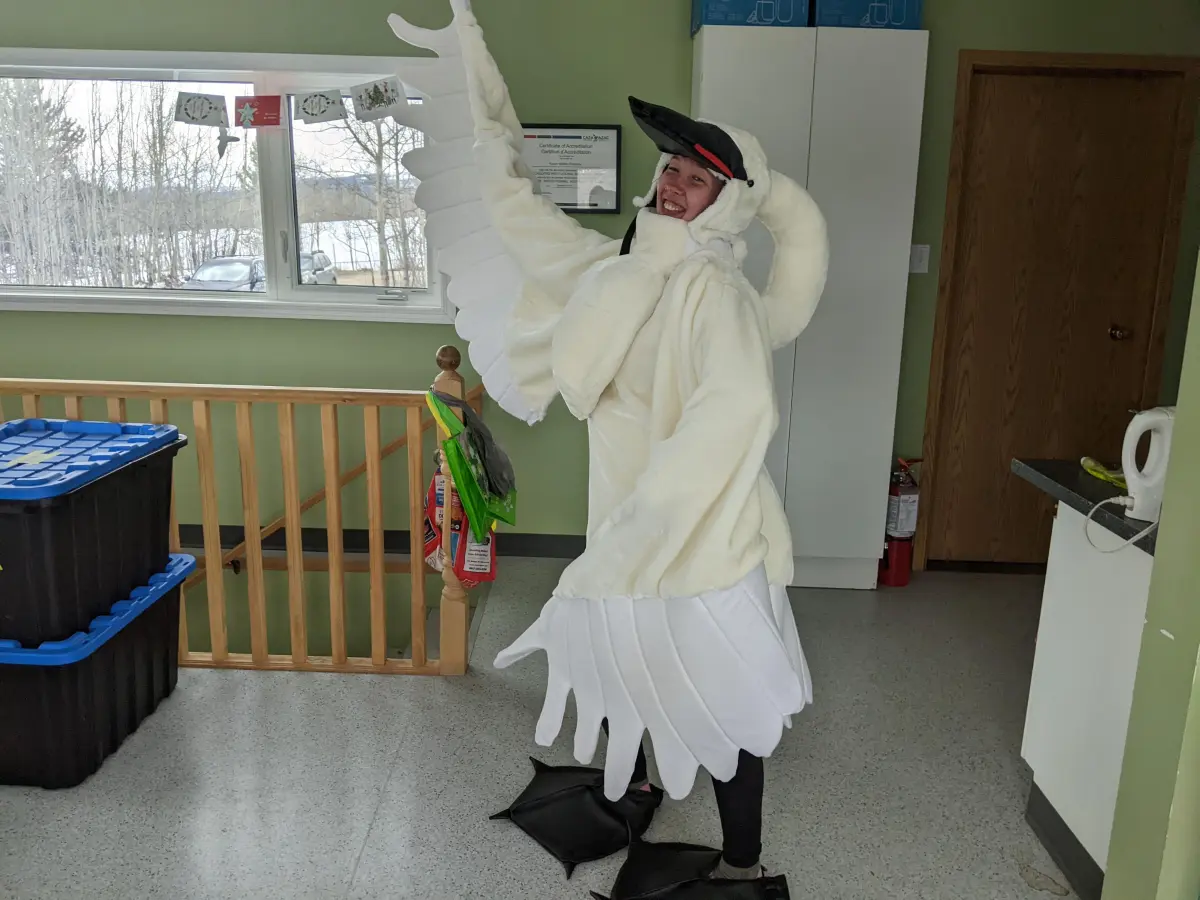
Treats for Santa’s Reindeer?
Treats for Santa’s Reindeer?
7 minute read –
What will you leave out for Santa on Christmas eve? Milk and cookies are a classic (in North America anyway, I was surprised to find that traditions vary dramatically around the world).
But more importantly. What do you plan to leave out for Santa’s reindeer?
We have a recommendation, and it’s not what you’d expect. You can skip to the bottom to find out, but you’ll miss several fascinating and well-reasoned tangents.
First things first – why would the Yukon Wildlife Preserve be qualified to make suggestions about the diet of Santa’s reindeer?
1. Caribou and Reindeer aren’t so different
What’s the difference between caribou and reindeer?
Reindeer can fly!
Jokes aside, caribou and reindeer are VERY similar. They are actually considered the same species, rangifer tarandus. Although there are more than a dozen sub-species and ecotypes. These sub-species or ecotypes are grouped (or separated) by differences in:
- genetics
- morphology (what they look like)
- movement and life history (what they do), and
- distribution (where they live)
We use “Caribou” to refer to North American sub-species/ecotypes. And we use “Reindeer” to refer to most of the sub-species/ecotypes found in the circumpolar regions between Greenland and Russia.
In Canada, COSEWIC (Committee on the Status of Endangered Wildlife in Canada) splits up Caribou into “designated units” for conservation purposes. The Yukon is home to three of those:
- Barren Ground Caribou (includes the Porcupine caribou)
- Northern Mountain population of Woodland Caribou (includes Southern Lakes Caribou, Chisana, Finlayson and other herds).
- Boreal population of Woodland Caribou (just 100-200 caribou found east of the Peel river on the Yukon/NWT border)
The Preserve’s caribou are part of the Northern Mountain Caribou population of Woodland Caribou. They originated from the Chisana and Finlayson herds.
In the future, rangifer tarandus might get split into a number of different species to better reflect differences, but I digress.
And who’s to say Santa hasn’t been using Caribou all this time? After all, Canada’s most northern caribou subspecies, the Peary Caribou, are definitely in contention for the glamorous title of “northernmost subspecies of rangifer tarandus”.
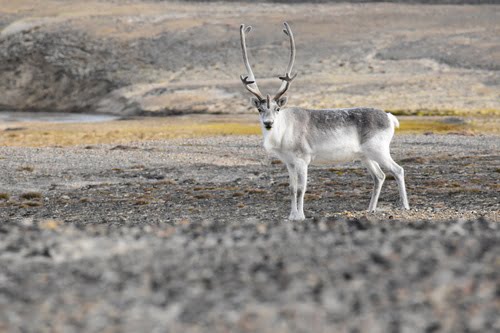
Peary Caribou in Canada’s Arctic iNaturalist Photo 246118587, (c) Phil Morrow, some rights reserved (CC BY-NC), uploaded by Phil Morrow
Now that we have the whole caribou vs reindeer thing out of the way (for now), we need to learn more about what they eat.
2. What do Caribou Eat in Wild?
We all know caribou eat lichen. But as you now know, that’s not all they eat! In fact lichen alone probably wouldn’t be enough for a caribou to survive. 1Line 61-62, https://tspace.library.utoronto.ca/bitstream/1807/110109/1/cjz-2021-0162.pdf
Biologists have figured out two ways to learn more about what caribou eat:
- Watch what they put in their mouths;
- Examine, very carefully, what comes out the other end.
I know which job I’d prefer.
Actually, that second option is way cooler than you’d think. It turns out that as ruminants, caribou digest their food so well that looking at scat isn’t enough (even with a magnifying glass). You have to look really really closely. Researchers from Trent University used DNA metabarcoding. Basically, little bits of DNA from the food they eat end up in the scat!
The researchers use some new technology to sequence thousands of bits of DNA and compare them against the DNA sequences of known plants. That allows scientists to see the proportions of different plants. By using captive caribou (from Riverview Park and Zoo in Peterborough – one of our CAZA colleagues) they know that not everything they eat ends up resulting in intact-enough DNA in the scat. But it certainly gives you a good idea of some of the important foods. In this case, these caribou on the north shore of Lake Superior ate a lot of Maple, dogwood and Yew. 2https://www.facetsjournal.com/doi/full/10.1139/facets-2021-0071
Now back to the “watch what they put in their mouths”. Until relatively recently, this was pretty difficult. It’s tough to watch caribou (from a distance) and see which species they eat. But in the last decade biologists have started using caribou neck cameras!3https://www.researchgate.net/publication/272409899_Factors_influencing_the_seasonal_diet_selection_by_woodland_caribou_Rangifer_tarandus_tarandus_in_boreal_forests_in_Ontario One of the most recent neck camera studies was done just last year on the Forty Mile Caribou Herd (which ranges between Yukon and Alaska).
Researchers collected more than 5000 video clips (amounting to 14 hours of video) and spent 370 hours figuring out what the caribou were eating.4https://onlinelibrary.wiley.com/doi/10.1002/ece3.8349
They sure do eat a lot of different stuff!
They also analyzed fecal samples. They were able to identify 12 species from fecal samples, but more than 60 species of plants using the video clips. They found that the Forty Mile caribou ate “shrubs in summer to accumulate fat, because of their relatively high digestibility…” They also ate leafy plants, grasses, mosses and mushrooms! But lichen was always the majority of what they ate.
Okay, so caribou have pretty complex diets. But what would make for a tasty treat? Luckily we have lots of first hand experience at the Preserve!
3. Not just any snack will do
Caribou are ruminants. That means they have multi-chambered stomachs like cows. They actually ferment foods in their rumen. This helps break down challenging food sources like leaves, grasses, lichens, and more. That fermentation means ruminants are very sensitive to sugary foods. With too much sugar, fermentation can go wild, creating a frothy, gassy mess. In extreme cases that can cause a condition called bloat, which can easily kill a ruminant.
All that to say, “treats” like apples or other sweet fruits are risky. Keep those sweet treats for Santa and focus on a healthy snack for his caribou. But not just any healthy snack. If only it were that easy!
4. Caribou are picky eaters
We’ve had caribou at the Preserve for more than 30 years. Let us tell you: caribou are picky eaters.
For example, the caribou actually pick through the hay-alfalfa blend we feed them and pick out the higher protein alfalfa and leave the hay behind.
But alfalfa isn’t enough by itself. We also need other reliable, healthy food sources for our caribou.
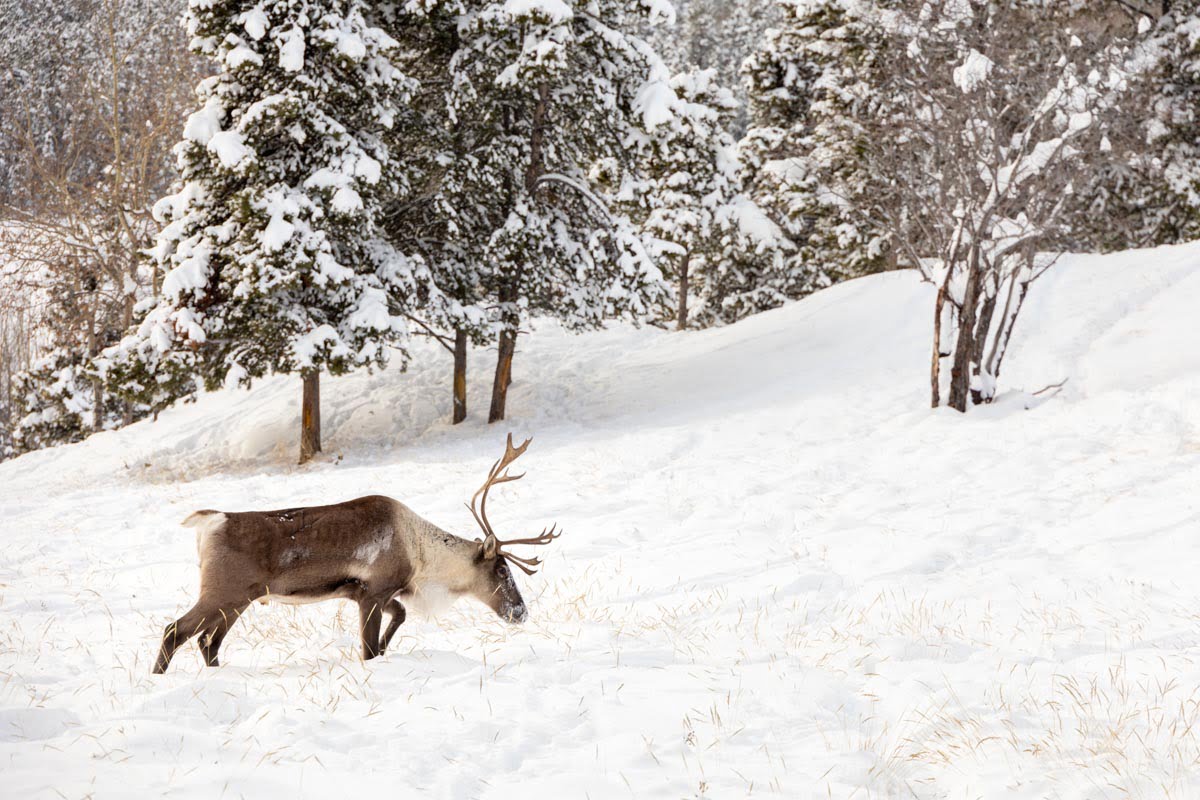
Caribou at the Yukon Wildlife Preserve. Photo by Jake Paleczny.
In the early 2000’s Our Veterinarian Dr. Maria Hallock worked with an animal nutritionist to design the perfect caribou pellet. The problem is that most commercially available feed pellets are designed to quickly fatten up farm animals. We needed a healthier option – a source of food that would give caribou all the nutrients they need, but would also be healthy.
By lab testing lichen, Dr. Maria and the nutritionist found that lichen is mostly water and non-starcheous carbohydrates. Potatoes, corn, beets, broccoli, and apples have lots of carbohydrates. But the carbohydrates in beets, broccoli and apples don’t have as much starch as potatoes and corn. Sugar just isn’t as easily accessible in non-starcheous carbohydrates.
They created 9 different pellet formulas for testing. Some versions were a bit too tasty, others were very expensive to make. The version they wanted to go with relied on beet pulp as a key ingredient. But the caribou wouldn’t eat it! By tweaking the blend between alfalfa and beet pulp, they were able to find a cost effective, healthy pellet (with the right balance of protein, fibre, minerals and amino acids) that the caribou would actually eat.
But believe it or not, alfalfa AND the super-duper-special pellets aren’t quite enough top notch health. As a result Dr. Maria also supplements the alfalfa and pellets with:
- Fruit and vegetable pulp (Thank you Booster Juice at the CGC!) but only the apple, beet and carrot pulp – they won’t touch anything else!
- Truckloads of leafy willow and aspen branches delivered daily by our staff all summer long.
- And mushrooms (and sometimes lichen) collected by our Nature Camp kids, supporters and staff.
“They LOVE mushrooms” says Dr. Maria. “They don’t get lichen very often, but when we’ve had camp kids collect some for them, they don’t even hesitate, they go for it right away. Even the ones that haven’t tried lichen before!”
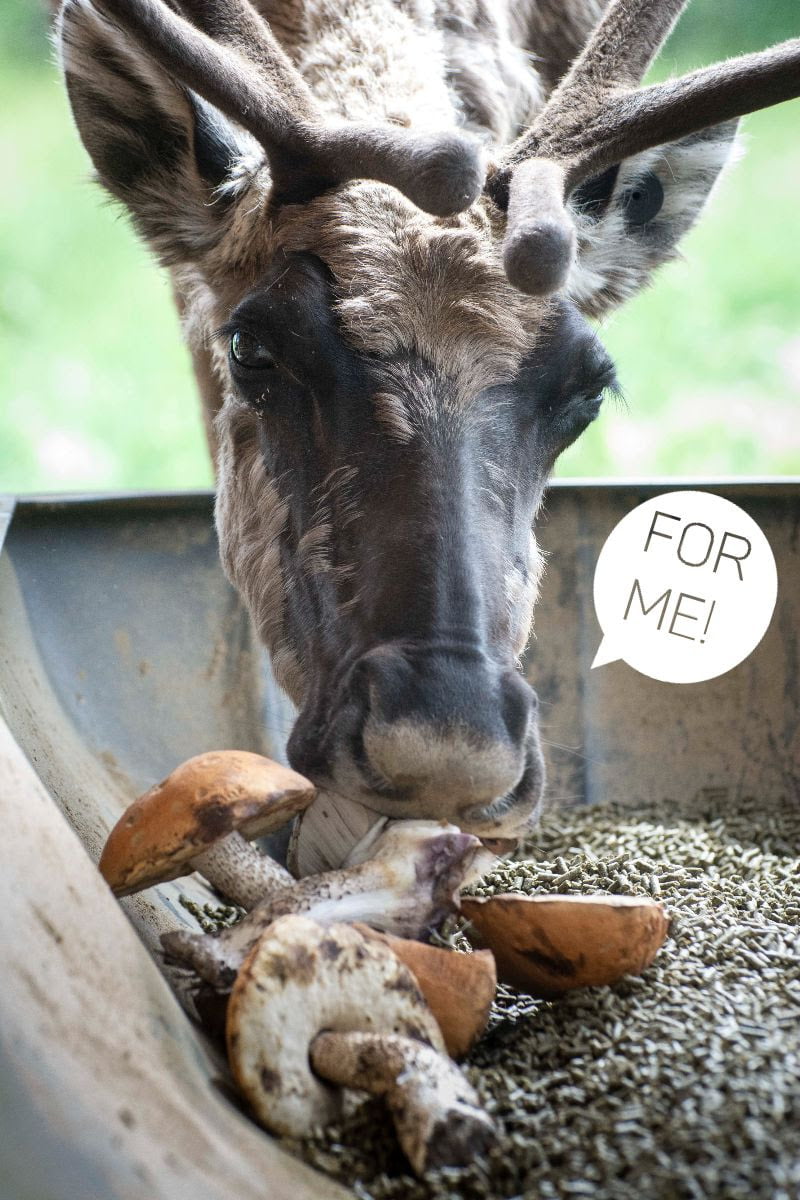
Okay, so I may have digressed a bit. Let’s recap.
- Stay away from the sugary treats
- Caribou like their non-starcheous carbohydrates
- Caribou really like mushrooms
5. The Perfect Snack for Santa’s Caribou
We’ve explored caribou and reindeer taxonomy, we’ve looked at the research and consulted with Dr. Maria. So where does that leave us?
If you’re going to leave a treat for Santa’s reindeer this Christmas, we recommend: mushrooms, alfalfa sprouts, carrots, or beets (although they may not eat all the beets).
Merry Christmas!

Jake Paleczny
He/Him - Executive Director/ CEO
Jake Paleczny is passionate about interpretation and education. He gained his interpretative expertise from a decade of work in Ontario’s provincial parks in addition to a Masters in Museum Studies from the University of Toronto. His interests also extend into the artistic realm, with a Bachelor of Music from the University of Western Ontario and extensive experience in galleries and museums.




